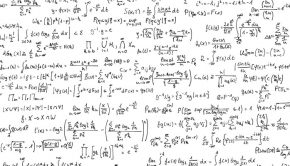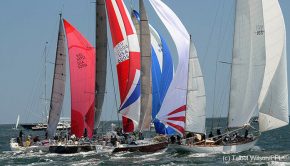Making the best rating system better
Published on May 1st, 2019
The history of PHRF dates back to 1959, making it the longest running rating system for handicapping dissimilar boats in the USA. Based on observations of actual performance instead of operating on measurement or design information, PHRF allows for local committees to manage the fairness of competition.
While newer rating systems seek a more scientific approach to eliminate a subjective analysis, Jim Quanci finds the basis of PHRF to be far more objective that people give it credit for. Here’s his editorial on the topic:
While other rating systems – based on VPP of various sorts – depend on physics and algorithms that try to approximate the complexities of the real world, PHRF is based on “statistics” curried from actual race results for many boats in varied conditions over time. The result is how measurement rules are just approximations that ignore some secondary and many tertiary factors.
Hoe do the physics based rating systems factor in wave state or oscillating wind shifts? Or air temperature (density) or salinity (water density)? They mostly don’t, but PHRF does because it focuses on the results over time – statistics.
It’s the same approach speech recognition uses that we all experience every day with Alexa and Siri, which utilizes real world results over time – statistical analysis. This is after 30 years of failing efforts pursuing speech recognition using various algorithmic approaches.
So instead of going down this same well tread path of looking for a silver bullet rating system that accurately models the complex real world… which has failed time after time (you know that saying about doing the same thing over and over and hoping for a different answer), why not take the most successful rating system on the planet – PHRF – and make it better?
A good start for improvement would be creating a national (international?) database that records basic data for all PHRF races run – boat type, wind state, wave state, course info, tide info, elapsed time, and a few other odds and ends I am sure our naval architects could agree on. Increase the data pool so we can improve the statistics PHRF is based upon.
Deliver the majority of sailors better PHRF ratings (reduce the local subjectivity factor a wee bit). Maybe even deliver every racer a few PHRF ratings the RC can choose from based on conditions and course (NorCal PHRF provides both around the bouys and downwind PHRF ratings but could sure use more data to improve these).
By making the PHRF race results database larger, PHRF committees can do a better job setting PHRF ratings (reduce subjectivity) – and racers can see the data their rating is based on. And more actual results will help improve ratings on boats that were built in smaller volumes.
Sure this doesn’t help folks with one off boats… but that is just a few percent of the racers… these few folks are free to keep chasing the money hole that is racing under VPP based rating systems (chasing the loopholes inherent in all VPP based systems).
And sure administering and getting PHRF ratings is so inexpensive… and some folks thinks taking expensive measurements means a better result…
Where is the data showing these VPP based systems are better than PHRF? The fact the statistics show newer boats “too often” beat older boats under most VPP based rating systems is actually an indicator how inaccurate these VPP rating systems are.
So stop denigrating PHRF until you can show us the statistical data that proves your (frequently expensive) rating system is better than PHRF for production boats.








 We’ll keep your information safe.
We’ll keep your information safe.